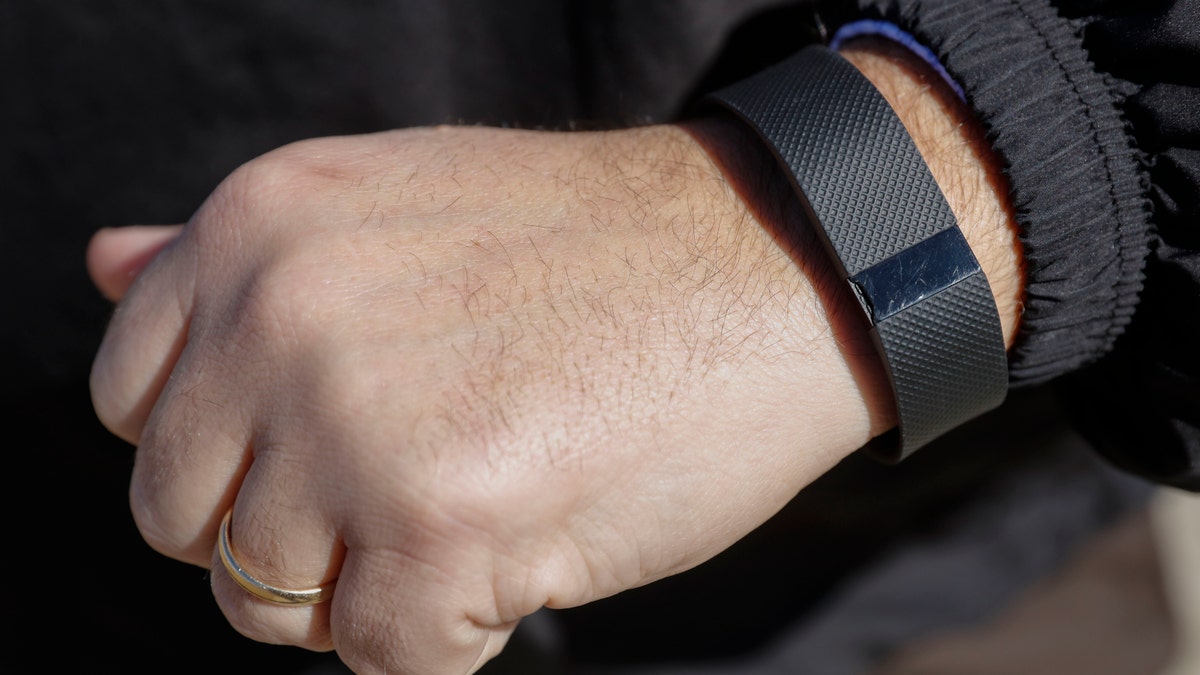
FILE - In this Monday, Feb. 29, 2016, file photo, Brett Broviak, a manager of respiratory and sleep services at IU Health North Hospital, shows off his Fitbit fitness tracker for the camera on the hospital's campus in Carmel, Ind. Wearing a stylish fitness tracker may help you keep tabs on things like how many steps you take, but the devices themselves _ even with the lure of a cash reward _ probably wonât improve your health, according to the biggest study yet done on the trendy technology. (AP Photo/AJ Mast, File) (AP Photo/AJ Mast, File)
In 2013, when David Stewart tipped the scales at 200 pounds, he slapped on a Fitbit, thinking it’d be a quick way to shed the weight. Instead, the opposite happened.
The activity band tracked his sleep and exercise and gave him a goal of 10,000 steps a day — approximately five miles — to complete. But every time the 5-foot-6 tech manager from Crown Heights would meet his fitness plan, he’d gorge on pizza, doughnuts or ice cream, gaining more than 20 pounds over the course of four months.
“It just gave me a license to let me eat whatever I wanted,” Stewart, now 45, tells The Post. “It’s a good tool to keep you active, but it’s nothing more than a tool.”
More than 20 percent of adult Americans wear fitness trackers, according to a survey by tech company Forrester, but not everyone’s scale is moving in the right direction. A September study by the University of Pittsburgh found that people who had activity monitors lost less weight than people who weren’t wearing them.
One possible reason: While activity monitors track how many steps you take, the number of calories burned fluctuates from person to person depending on factors such as height, weight and metabolism.
“Walking 200 steps, I can be burning [a lot fewer] calories than you do,” Dori Arad, a registered dietitian and exercise physiologist at Mount Sinai Hospital, tells The Post. He says he’s seen an increase in patients who’ve had trouble losing weight while using activity monitors.
Plus, while it sounds impressive, Fitbit’s 10,000-steps-a-day goal doesn’t have a very scientific origin, nor does it guarantee weight loss. The first pedometers were sold in Japan in the early 1960s and named “manpo-kei,” which translates to “10,000 steps meter.” That number was decided by a group of doctors who believed the average person takes about 5,000 steps a day — and if that number increased to 10,000 or above, they’d be healthier.
